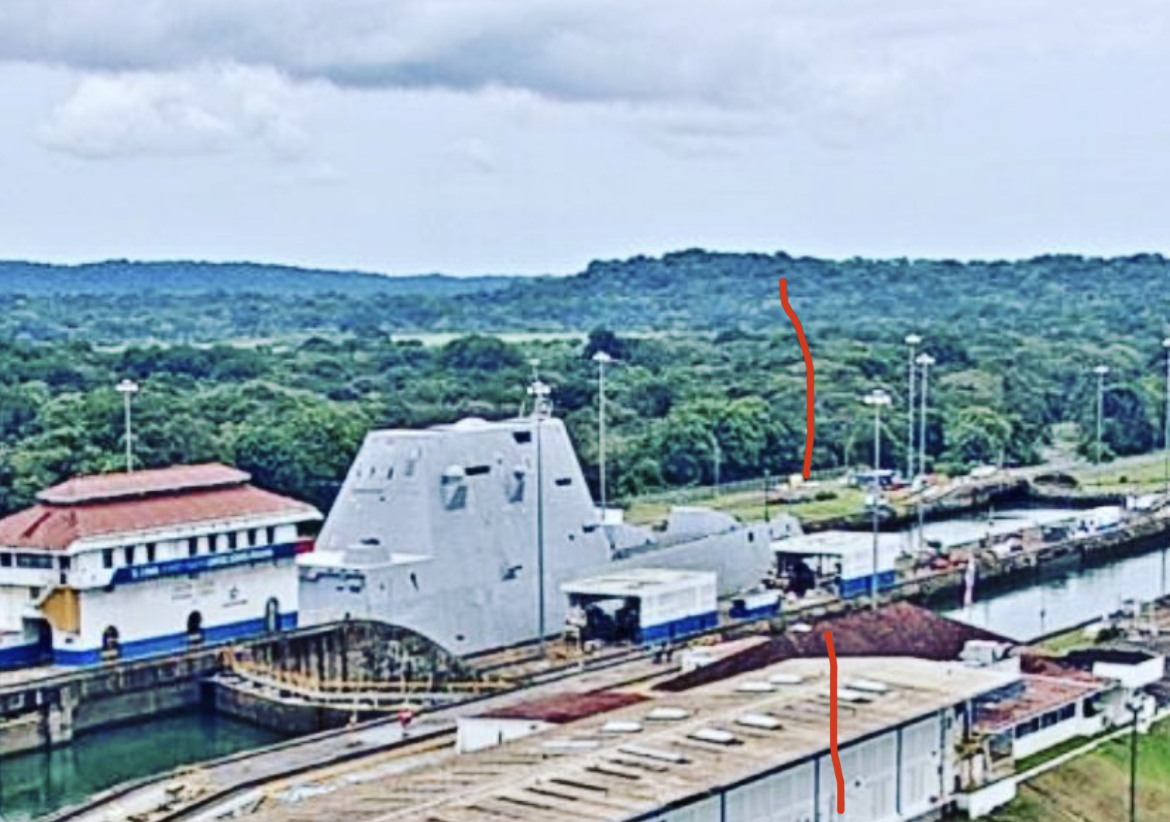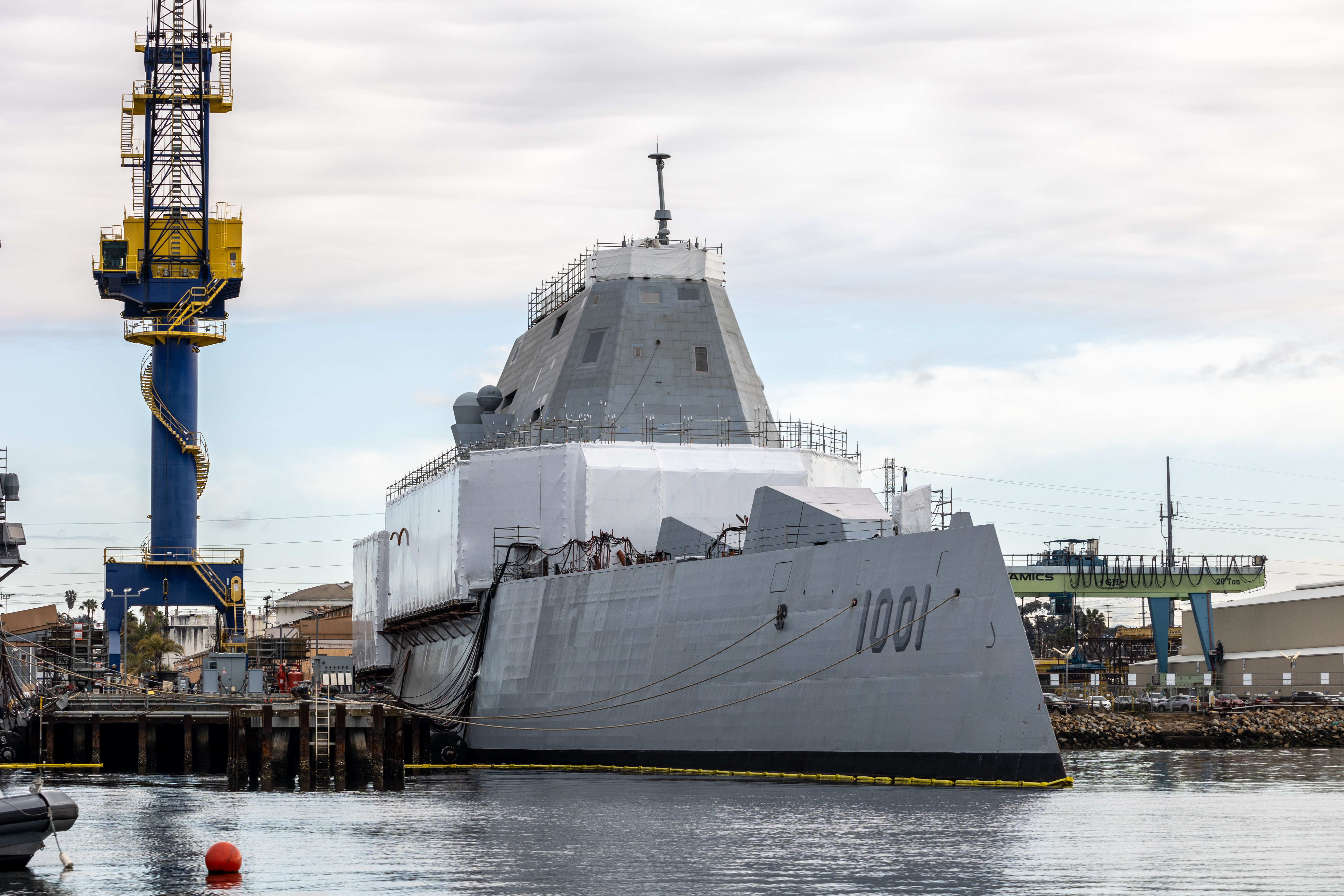
The guided-missile destroyer USS Zumwalt (DDG-1000) passed through the Panama Canal on its way to upgrade its weapon systems at a Mississippi shipyard, USNI News has learned.
Zumwalt passed north through the Pedro Miguel Locks on Monday, according to photos from ship spotters. A Navy official confirmed that the destroyer had left the canal on Tuesday.
“USS Zumwalt (DDG-1000) … will shift its homeport from San Diego to Pascagoula, Miss., to enter a modernization period and receive technology upgrades including the integration of the Conventional Prompt Strike weapons system,” Navy spokesperson Cmdr. Arlo Abrahamson told USNI News.
“The upgrades will ensure Zumwalt remains one of the most technologically advanced and lethal ships in the U.S. Navy.”
The ship left on Aug. 1, after a 5-day delay due to maintenance problems, USNI News reported.
The 16,000-ton vessel is bound for Ingalls Shipbuilding in Pascagoula, Miss., for a modernization period that will include installing hypersonic missiles in place of the 155mm Advanced Gun Systems.
In place of the twin mounts, the Navy will install four 87-inch missile tubes to contain 12 Common Hypersonic Glide Bodies (C-HGB). The C-HGB is being developed by both the Army and the Navy. as part of the Pentagon’s Conventional Prompt Strike (CPS) program, which aims to deliver a conventional warhead anywhere in the world.

The Navy will add the missiles on the two other ships in the class, USS Michael Monsoor (DDG-1001) and Lyndon B. Johnson (DDG-1002), during their own availabilities at Ingalls.
The service aims to field the weapon on Zumwalt by 2025. It is also slated for installation aboard the Block V Virginia-class nuclear attack submarine with the Virginia Payload Module.
In June, the Government Accountability Office raised questions about the development and delivery timeline for the hypersonic weapons.
“The CPS program office noted that significant scope and challenges associated with the first-time integration of CPS may present risks to achieving DDG-1000’s installation schedule. In reviewing CPS program office information on critical technologies, we found that significant work remains for the program to demonstrate technology maturity,” reads the report.
“If the hypersonic weapon is not ready for integration on the DDG 1000 at the time of the aforementioned maintenance period,” it added, “the Navy may have to extend the duration of the planned maintenance period or wait for the next scheduled period to incorporate the system on the ship.”





